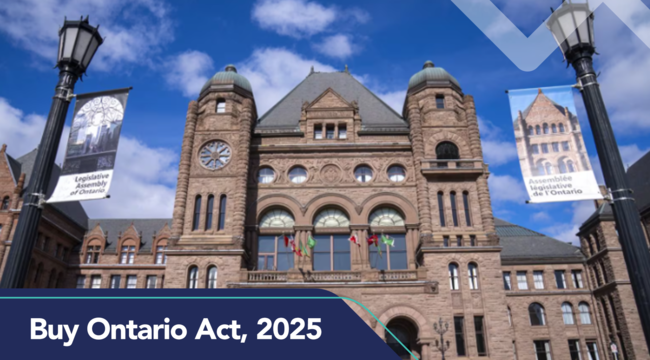HealthPRO Canada News
March 24, 2022
In rural BC, Northern Health CEO and HealthPRO Board member Cathy Ulrich is always looking to bring healthcare services closer to home

As the service delivery issues increased in rural and remote BC during the pandemic, Northern Health CEO Cathy Ulrich and her team cultivated partnerships to come up with creative solutions. One of those was a partnership with the BC First Nations Health Authority to develop a Rural, Remote & First Nations framework for COVID-19 that facilitated patient transfers, cohorting, and cultural safety of services for First Nations communities.
__________________________________________________________
One of the distinctive features of Northern Health is the expansive geography you cover in British Columbia. There are 18 hospitals, 15 long-term care facilities, community health centres, many community health units and offices providing specialized services. There would be many challenges to delivering care to remote communities at the best of times – did those challenges change significantly during the pandemic and how were they dealt with?
When you have small places and big distances in between it’s a challenge to figure out the complement of services to be provided at the local level, versus what services can come in on an itinerant basis and what services people may need to travel out to obtain. Getting that mix right is a complex process because it's dependent on the recruitment and retention of particular kinds of professionals and what the physical infrastructure can support.
In general, we see Northern Health as an organization that's based in primary and community care. Primary and Community Care needs to be accessible at the local level and then we need to work together to find creative, innovative ways to shrink the geography and bring services closer to home. That might be through virtual means, but the challenge in remote areas is that the connectivity issues are often greater. But that's improving, and during the pandemic virtual services certainly expanded.
Patient transport is another significant issue in Northern rural geographies. How do you get patients to definitive care and then repatriate them back home again? I emphasize that because during the pandemic people with COVID-19 could deteriorate very rapidly. A lot of our very small hospitals dealt with a complexity they've never previously confronted.
What were some of the ways that you came up with to manage the transport issue and the difficulty of local hospitals having to treat people who got quite ill so quickly?
In Northern BC, up to 20% of our population is Indigenous. There are 55 First Nations communities in the north and many are remote. Towards the end of the first wave of COVID-19, we identified the need to collaborate on a COVID-19 response framework specific to the needs of First Nations communities. At the table were people from the First Nations Health Authority in British Columbia, people from First Nations communities, Northern Health staff, physicians who work in Northern BC, and BC Emergency Health Services.
Together we developed the Rural, Remote & First Nations framework for responding to COVID-19. The group considered how to support people living in remote communities in terms of self-isolation in the community or in another community closer to an acute care facility.
We also considered how to ensure cultural safety of services provided to First Nations people and First Nations communities. In the early waves of the pandemic, COVID-19 had a stigma attached to it. As we moved into organizing immunization clinics, we worked in partnership with the First Nations Health Authority to ensure that the clinics provided a culturally safe experience.
Access to services has been severely limited throughout the pandemic and particularly throughout that first year before we had access to vaccines. The Northern Health team thought about how to fill the gap. A virtual primary and community care clinic was established rapidly in that first phase and has been a significant part of the overall pandemic response. It was amazing to watch the team pull that together. We've grown it from there and it is now meeting the needs of people who have difficulty accessing primary care beyond COVID-19. The Northern Health team is an incredible group of people who came into work every day, rolled up their sleeves, and tackled all the challenges that have been part of the pandemic.
What did you learn about yourself while leading through this time?
I'm a collaborative leader, and I think partnerships with industry, with First Nations communities, the First Nations Health Authority, with other parts of the province have been critical to our response.
In an emergency operations response, you also need to be directive. That's not my bench strength, but I've had to learn how to do that because there wasn't always time for consultation when we had to make quick decisions. I became even more aware of the importance of teamwork and relying on the strength that each member brings to difficult, challenging situations like this.
One of the areas seriously impacted by COVID is staff. Many are disillusioned, burnt out, shifting to less demanding roles within healthcare or leaving healthcare entirely. How can we continue to invest in our people – when healthcare resources are stretched to the limit and we need our qualified and dedicated people more than ever?
Yes, our health human resource resiliency is very fragile. In a rural and very remote area this hits health care twice as hard. There was a pre-existing demand-supply gap for Human Resources before the pandemic.
Over the course of the summer, a team within Northern Health has considered what will be necessary for rest and recovery throughout the rest of the pandemic and post-pandemic, for staff at all levels of the organization and physicians. At many of our sites we have put additional mental health supports on site particularly when a community or a site is experiencing a real surge. It's not a panacea, but it helps.
We’re also doing work with the Ministry of Health on workforce sustainability, considering things like housing, childcare, and more management supports. There are a growing number of people who will be retiring, so we're going to be left with a workforce that is not only traumatized, but relatively new to health care. We need to determine what the clinical supports and management supports are needed to support staff differently than maybe what worked when we had a mix of experience in the workforce.
What makes the mission of HealthPRO meaningful to you?
I've been on the board for almost six years and throughout that time HealthPRO has been committed to bringing value to the healthcare system. They work hard to be embedded at all levels of the healthcare system, in order to understand the needs and issues of healthcare and then bring value through their procurement processes.
One example is the excellent work the HealthPRO team has done to support the system federally and provincially deal with drug shortages and the challenges around the procurement of medications.
Have you had direct experience seeing how HealthPRO helps hospital leadership?
I was around when we were doing our own procurement inside the health authorities. You may give up the personal and professional preferences, "I like that product for this facility because of X, Y and Z,” but what you get in return by working with HealthPRO is the best value, best quality, and best price for a product, without having to do all the legwork and logistics.
In our globalized world of supply markets and supply chain, knowing that the expertise is there, looking after those things on our behalf is a real value add. I don't have to figure it out because somebody else that I trust is figuring it out.
What’s the best piece of career advice you received?
When I came into this role of CEO, the outgoing CEO, who was one of the people I counted on as a mentor at that time, told me to trust my team. I think about that a lot. I’m so fortunate to be able to count on the team around me to give me good advice. When you're a Vice President, you tend to be relied on for more depth of knowledge, and when you're a CEO it's more about orchestrating the whole. I really had to rethink who I am as a leader when I transitioned to CEO and so that piece of advice was really helpful.


